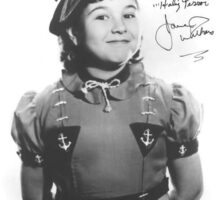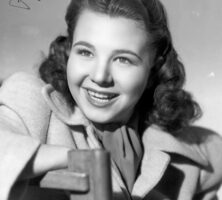Before Jane Withers became one of the most popular child actors of the 1930s, she performed in vaudeville and on her own radio show in Atlanta. Initially gaining fame in 1934 as the little girl who roughed up Shirley Temple in the film Bright Eyes, Withers maintained a successful career in the film industry for more than a decade. As an adult, Withers returned to the profession and successfully reestablished herself as a character actor during the 1950s.
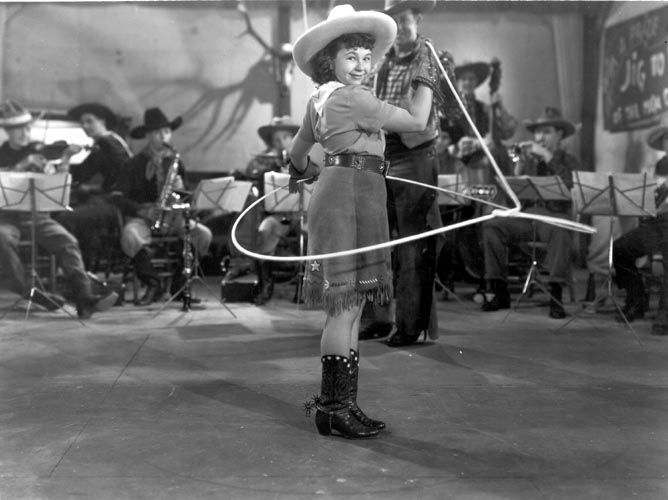
Early Career
Jane Withers was born in Atlanta on April 12, 1926. Her mother, Lavinia Ruth Withers, encouraged her child’s interest in theater, and Withers’s career began when, as a toddler, she won an amateur talent contest in Atlanta. The award led to work on Aunt Sally’s Kiddie Revue, a Saturday morning children’s program for which Withers sang, danced, and performed impressions of film celebrities. The show was broadcast on the Atlanta radio station WGST, and by the age of four Withers was performing in her own radio program, Dixie’s Dainty Dewdrop.
In 1932 Withers traveled with her mother to Hollywood, where the young girl was soon performing on children’s radio programs, doing voice-overs for cartoons, and playing bit parts in films, beginning with Handle with Care (1932). She also played an uncredited role in It’s a Gift (1934) with screen comedian W. C. Fields, who selected Withers to perform in a pantomime hopscotch scene with him. Fields, who was infamous for loathing children, astonished Withers’s mother by praising the girl’s ability, telling her, “You have a very talented little girl here; I think she’s gonna go very far.”
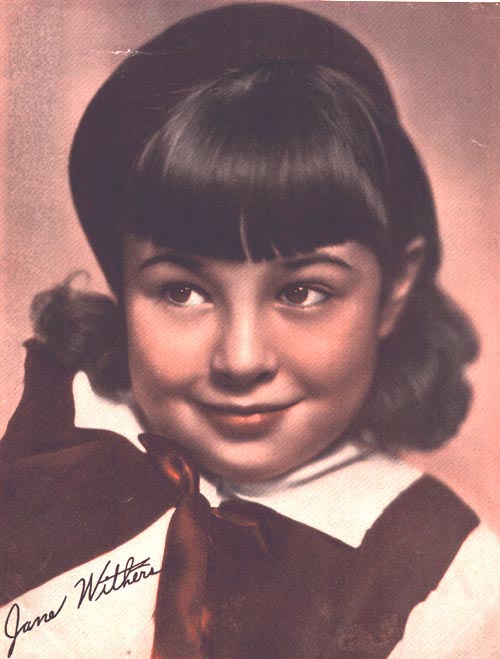
In 1934 Withers won the prized role of the cruel brat Joy in the Shirley Temple vehicle Bright Eyes. Temple was Hollywood’s most popular child star, but audiences enjoyed Withers’s mistreatment of little Shirley, and critics praised the performance. As a result of this success, Withers became a contract player for Fox Studios and appeared in her first starring role in the film Ginger (1935), which began production on her eighth birthday. Withers recalled, in a 2003 interview, receiving flowers on this occasion from both W. C. Fields and U.S. president Franklin D. Roosevelt, who had followed her career after seeing Withers’s impression of him in a newsreel. According to Withers, she maintained a friendship with Roosevelt until his death at Warm Springs in 1945.
Often working with a handpicked crew at Fox known as the “Withers Family,” the young actress appeared in thirty-eight films over the next twelve years and starred in a number of comedies and musicals, including Paddy O’Day (1935), Pepper (1936), and The Holy Terror (1937). As critic Leonard Maltin has observed, “She endeared herself to audiences with her seemingly limitless energy and impish charm.” In 1937, at a time when child stars were remarkably popular, Withers’s films ranked sixth among the top ten box-office attractions in U.S. theaters. Her parents also licensed her image and name for a series of dolls and, in the early 1940s, for a series of mystery novels in which Withers was portrayed as a young sleuth.
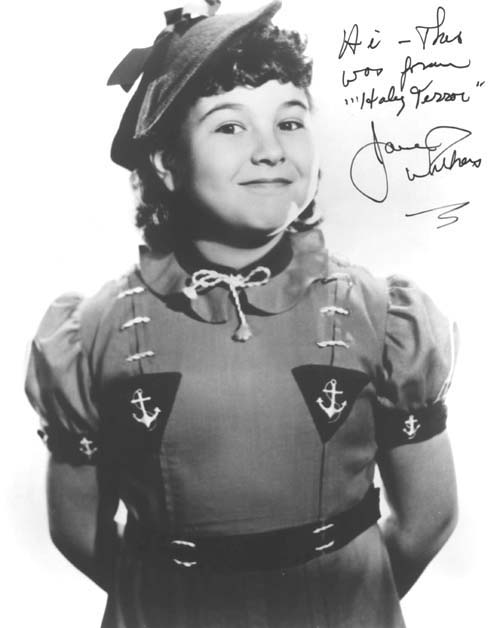
Transitional Years
As Withers matured into a teenager, both she and her fans became frustrated with the childish projects assigned to her by the studio. Under the name Jerrie Walters, the fifteen-year-old Withers created the story line for the film that became Small Town Deb (1941), in which she also starred. As Withers explained in a 2003 interview, her own experiences of not being allowed by the studio to grow up were translated into the story of a teenage girl whose “mother isn’t allowing her to grow up, to be herself and to find herself.”
As a young star, Withers often visited orphanages and hospitals, where she performed for the children. During World War II (1941-45), she performed in more than 100 bond and camp tours within the United States and sent her extensive collection of 3,500 dolls, most received as gifts from her fans, on tour to raise money for the war effort.

With the decline of the child-star genre, Withers’s popularity began to fade, and audiences familiar with her work in comedy did not accept her in more serious films like The North Star (1943). Because her parents had managed her income carefully, Withers was financially independent. She left the film industry in 1947 and soon afterward married Bill Moss, a Texas oilman and rancher with whom she had three children. The couple divorced in 1954, and the next year Withers married Kenneth Errair, a member of the 1950s vocal group the Four Freshman. Withers and Errair had two children and were married until Errair’s death in 1968.
Return to Film
In 1955 Withers returned to Hollywood and began film school at the University of Southern California, planning to become a director. But she resumed acting when director George Stevens invited her to take a supporting role in his film Giant (1956). She continued working as a character actor in film and television, appearing on television in episodes of The Alfred Hitchcock Hour, The United States Steel Hour, The Love Boat, and Murder, She Wrote, among others. She also played the role of Josephine the Plumber in a long-running series of commercials for Comet cleanser. In the 1990s she began doing voices for Walt Disney’s animated cartoons, and she voiced a gargoyle named Laverne in Disney’s version of The Hunchback of Notre Dame (1996) and its sequel (2002).
An enthusiastic amateur photographer, Withers participated in discussions, hosted by the Kodak Corporation, of her photography. In recognition of her philanthropy, Withers received a 2003 Living Legacy Award from the Women’s International Center.
Jane Withers died on August 7, 2021, at the age of ninety-five.







